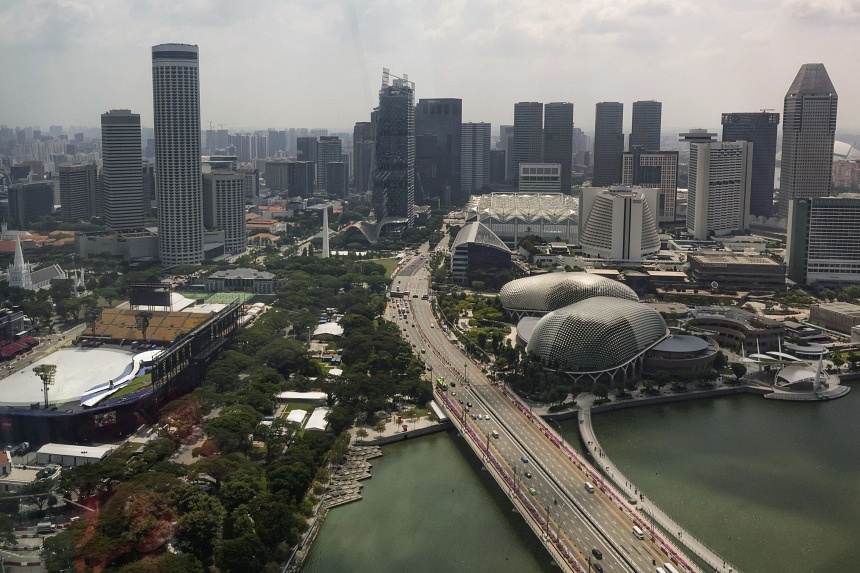SINGAPORE – Economic growth has picked up pace and will likely finish 2024 at the higher end of the official estimate of 2 per cent to 3 per cent, said Monetary Authority of Singapore (MAS) managing director Chia Der Jiun.
“(Growth) has been relatively positive so far in the latest months on a year-on-year basis, coming in stronger at the upper end of the 2 per cent to 3 per cent range,” Mr Chia said, referring to the Ministry of Trade and Industry’s estimate, which was narrowed from 1 per cent to 3 per cent in August.
“For the full year, we think it will finish quite squarely within that range, probably on the stronger side.”
Mr Chia was speaking at The Bretton Woods Committee’s Future of Finance Forum, an annual conference of policymakers, regulators and bankers hosted by Swiss bank UBS at its Singapore office on Sept 13.
His comments came a couple of days after private-sector economists estimated that gross domestic product (GDP) would expand by 2.6 per cent in 2024, up from the 2.4 per cent they had projected in an MAS survey in June.
Mr Chia said inflation is also easing, with the latest readings showing core inflation – this excludes private transport and accommodation costs – at 2.5 per cent in July, down from a 14-year high of 5.5 per cent in January.
“Into next year, it should move towards the range we have been historically comfortable with,” he noted in a panel discussion.
He did not give estimates for 2025, but the MAS had earlier noted that it seeks to ensure that core inflation declines to 2 per cent by early 2025.
Mr Chia said Singapore growth has become more broad-based in recent months as manufacturing has turned positive after months of declines, adding to the strength of the services sector recovery in 2024. “We’re getting some pickup from the global electronic cycle, but growth has been stronger really on services,” he added.
Singapore’s manufacturing sector has started the third quarter on a positive note, expanding 1.8 per cent year on year in July, after contracting 4.3 per cent in June. The sector shrank 1.4 per cent in the first half of 2024 and 4.3 per cent for the whole of 2023.
Mr Chia said most South-east Asian economies are also experiencing a similar growth recovery and easing of inflationary pressures. Meanwhile, the pressure on currencies from a stronger US dollar is also easing.
He noted that the region is also a beneficiary of the China-plus-one strategy, where many foreign companies are looking to build manufacturing capacity outside China.
The conference was also addressed by Reserve Bank of India governor Shaktikanta Das; Mr William Dudley, chairman of The Bretton Woods Committee and former president of the Federal Reserve Bank of New York; and UBS Group chairman Colm Kelleher.
The participants spoke at length about the outlook for the global economy and challenges to financial stability.
Mr Kelleher said better access to liquidity and stronger paths to recovery are vital to improving regulations for banks in the wake of the Credit Suisse collapse in 2023. “We must make sure that we have proper and robust recovery and resolution programmes across the system,” he said.
While Mr Dudley said there is scope for a half-point rate cut at the US Federal Reserve’s meeting next week, citing a slowing US labour market, Mr Das urged policymakers worldwide to remain prudent and agile even as inflation continues to ease.
“A flexible and robustly equipped regulatory architecture in the financial sector would be essential to staying ahead of the curve and minimise risks,” he said.
“Macroeconomic policymakers and other stakeholders must also be quick to adopt a forward-looking approach to navigate the difficult bends and turns on the road ahead.”


